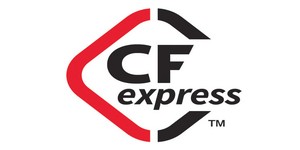
CompactFlash - the memory card format still much loved by high-end camera manufacturers for its impressive storage capacity - has just got more impressive with the release of version 5.0 of the specification.
As reported over on Electronista, the CompactFlash Association - the body behind the CF standard - has unveiled CompactFlash version 5.0, which increases the theoretical maximum capacity of a CompactFlash card.
While current cards are limited to 137GB - which is still a pretty impressive figure when you consider the form factor we're talking about here - the new CompactFlash 5.0 specification increases the address space from 28 bits to 48 bits, potentially allowing for 144PB of storage on a single card. For those unfamiliar with the remarkable and little-seen 'petabyte,' that's 147,456 terabytes - or the contents of 16,063,292 dual-layer DVDs.
Of course, we won't be seeing such capacious cards any time soon: although the underlying technology used to address CompactFlash devices has changed, it still uses either a miniaturised mechanical drive - usually known as a MicroDrive - or traditional flash storage at its heart, and the state of the art in both fields is a long way from cramming even a single petabyte into a CompactFlash-size form factor. As data densities grow, however, the new CompactFlash standard should be able to keep up with whatever the storage industry can throw at it.
With CompactFlash being largely aimed at pro-level photographers, there's some good news in the new standard beyond mere capacity increases: version 5.0 allows up to 32MB of data to be thrown around in a single transfer instruction, compared to a mere 128KB in the current implementation of the standard. With sensor sizes increasing and an increasing number of people choosing to shoot RAW-format images over lossy compression formats like JPEG, that's a feature which is going to come in handy.
Additional features of the new standard include TRIM-like performance tuning, quality of service guarantees for streaming video data, and a new connector which the Association claims offers "better card design."
So far no manufacturer has come forward with an estimated release date of a card or device which supports the new 5.0 standard, so the race is on to be the first flash storage specialist or camera maker to tick the box on the product sheet.
Are you impressed with the potential of the new standard, or is 48-bit addressing a waste in such a small form factor? Share your thoughts over in the forums.
As reported over on Electronista, the CompactFlash Association - the body behind the CF standard - has unveiled CompactFlash version 5.0, which increases the theoretical maximum capacity of a CompactFlash card.
While current cards are limited to 137GB - which is still a pretty impressive figure when you consider the form factor we're talking about here - the new CompactFlash 5.0 specification increases the address space from 28 bits to 48 bits, potentially allowing for 144PB of storage on a single card. For those unfamiliar with the remarkable and little-seen 'petabyte,' that's 147,456 terabytes - or the contents of 16,063,292 dual-layer DVDs.
Of course, we won't be seeing such capacious cards any time soon: although the underlying technology used to address CompactFlash devices has changed, it still uses either a miniaturised mechanical drive - usually known as a MicroDrive - or traditional flash storage at its heart, and the state of the art in both fields is a long way from cramming even a single petabyte into a CompactFlash-size form factor. As data densities grow, however, the new CompactFlash standard should be able to keep up with whatever the storage industry can throw at it.
With CompactFlash being largely aimed at pro-level photographers, there's some good news in the new standard beyond mere capacity increases: version 5.0 allows up to 32MB of data to be thrown around in a single transfer instruction, compared to a mere 128KB in the current implementation of the standard. With sensor sizes increasing and an increasing number of people choosing to shoot RAW-format images over lossy compression formats like JPEG, that's a feature which is going to come in handy.
Additional features of the new standard include TRIM-like performance tuning, quality of service guarantees for streaming video data, and a new connector which the Association claims offers "better card design."
So far no manufacturer has come forward with an estimated release date of a card or device which supports the new 5.0 standard, so the race is on to be the first flash storage specialist or camera maker to tick the box on the product sheet.
Are you impressed with the potential of the new standard, or is 48-bit addressing a waste in such a small form factor? Share your thoughts over in the forums.

MSI MPG Velox 100R Chassis Review
October 14 2021 | 15:04








Want to comment? Please log in.